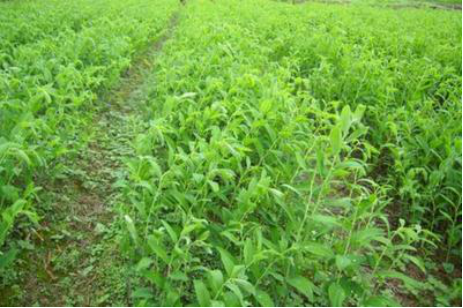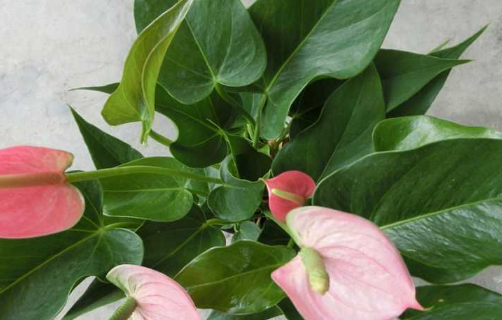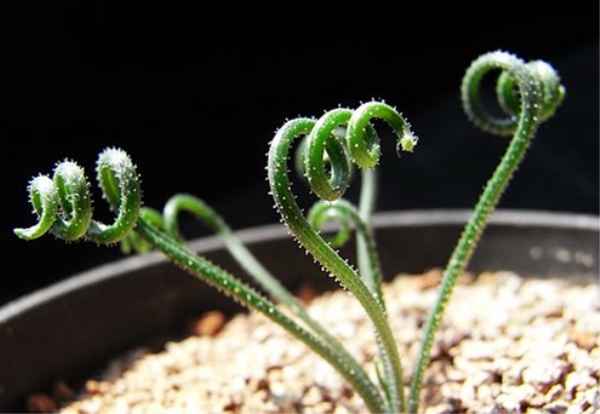Culture methods of Polygonatum odoratum
1. Soil.
Polygonatum odoratum is suitable to grow in sandy soil with deep soil layer, good drainage and slightly acidic soil, and pay attention to changing the soil every other year when planting, so as to ensure the supply of nutrients for the growth of Polygonatum odoratum.
2. Seed sprouting.
Polygonatum odoratum seeds should be soaked in cold water for one day and one night before sowing, then the seeds with clean water should be cultured in a wooden box covered with 5 cm thick sand, and the fine sand layer should be kept moist during the culture. wait for the seeds to germinate and emerge.
3. Planting and breeding.
Polygonatum odoratum planting is generally carried out in October, it is best to choose cloudy days, watering the right amount after planting to ensure soil moisture, while paying attention to light absorption.

4. Temperature.
Polygonatum odoratum is planted until the seedlings grow, and the temperature begins to drop. At this time, measures should be taken to prevent the cold from overwintering, so as not to freeze the seedlings.
5. Fertilization.
Polygonatum odoratum likes fertile soil, so it should be fertilized on time and according to quantity when planting. And in the seedling growth period, but also to achieve timely topdressing. If the base fertilizer has been fully applied when planting, topdressing can reduce the quantity.
6. Pest control.
The main diseases of Polygonatum odoratum are leaf spot, root rot, gray spot and so on.
The main pest of Polygonatum odoratum is mackerel, and the control method is to irrigate the root and surrounding soil of Polygonatum odoratum with diluted solution to spray and kill pests.
Culture methods and matters needing attention of Polygonatum odoratum
The Culture method of Polygonatum odoratum and the requirement of soil
Cultivation of Polygonatum odoratum is best to choose deep soil layer and good drainage, sunny slightly acidic sandy soil, and then pay attention to the change of soil when planting and breeding, probably every other year to ensure the nutrients needed for growth.
Selection of seed stem
When breeding Polygonatum odoratum, the first choice is to propagate with the underground rhizome. After preparing the rhizome, pay attention to the maintenance of the root bud in the indoor leeward and cool place.
The acceleration of seed germination
Before accelerating seed germination, Polygonatum odoratum seeds should be soaked in cold water for 24 hours, and then removed to control clean water, then put the seeds into wooden boxes for culture, and then use wet sand to assist in about 5 cm, waiting for germination and growth.
Planting and breeding
Planting is generally in early October to late October, it is best to choose cloudy or sunny days to plant, so as to promote the growth and sprouting of new seedlings. During this period, pay attention to heat preservation, watering to ensure the moisture of the soil. Also need to give enough light.
Pay attention to overwintering and prevent cold in the culture of Polygonatum odoratum
Although Polygonatum odoratum is hardy, in winter, because the weather is too cold, we should pay attention to prevent cold, lest frostbite plants, can not grow.
Fertilizing and topdressing
Polygonatum odoratum likes fertile soil, so it is necessary to fertilize Polygonatum odoratum on time and amount to supplement sufficient nutrients, which is conducive to the growth of plants.
Not only fertilize, but also pay attention to topdressing, especially during the seedling period, but note that if you apply enough base fertilizer, you will no longer need topdressing so as not to burn the roots.
Pay attention to pest control
Polygonatum odoratum mainly has diseases such as leaf spot, root rot, gray spot and so on.
Pests are: grub pests, the control method is to use 90% crystal trichlorfon 1000-1500 times to irrigate the soil around the root until the pest is killed.
Culture methods and matters needing attention of Polygonatum odoratum in Kangding
Latin name Polygonatum prattii Baker
The plant kingdom.
Class dicotyledonous plants / Dicotyledoneae
Liliaceae
Polygonatum
Distribution areas Sichuan (west), Yunnan (northwest)
Polygonatum odoratum in Kangding, which belongs to the genus Polygonatum of Liliaceae, is endemic to China. Distributed in Sichuan and Yunnan of Chinese mainland, growing in areas ranging from 2500 m to 3300 m above sea level, generally born under forests, thickets and hillside grasslands, and has not yet been artificially introduced and cultivated. 1. Medicinal value
[medicine name]: Kangding Polygonatum odoratum
[Pinyin]: KANGDINGYUZHU
[Laiyuan]: it is the rhizome of Kangding Polygonatum odoratum of Liliaceae.
[effect]: nourish yin and moisten the lungs, invigorate body fluid and quench thirst.
[main treatment]: treat cold and wind-heat and fever and cough, sore throat and thirst, dry cough and less phlegm, its effect is mild but not evil, lung and stomach yin injury, dryness and cough, dry tongue, thirst and other dryness and heat injure yin.
[classics of nature and taste]: gan, Ping. Lung and stomach meridians.
[usage]: oral administration: 10-15 grams, clearing heat for raw use, nourishing yin for use.
[distribution of animal and plant resources]: Western Sichuan and northwestern Yunnan.
[examination]: it was first published in the Chronicles of traditional Chinese Medicine.
2. Morphological characteristics.
Rhizome finely Terete, subequal, 3-5 mm in diam., branched. The stem is 8-30 cm high. The lower part of the leaf is alternate or opposite, the upper part is more opposite, the top is often 3 whorls, oval to rectangular round, 2-6 cm long. Inflorescences with 2 (3)-flowered, pendulous, total pedicel 2-6 mm, pedicel (2) 5-6 mm long; perianth lavender, connate into tube-shaped full-length 6-8 mm, lobes 6, 1.5-2.5 mm long; stamens 6, filaments extremely short, inserted near middle of perianth tube; ovary ca. 1.5 mm, with style ca. as long as. Berries ca. 7 mm in diam., maroon. Produced in Sichuan (west) and Yunnan (northwest). Born under forests or on hillside grasslands. Polygonatum angustifolia P. cur-vistylum Hua is a dwarf species distributed in the same region, with many whorls of 3-6 leaves per whorl, striped lanceolate to strip-shaped, 3-7 cm long, 1-5 mm wide, drooping after anthesis, and the latter character is not found in other species of the same genus.
3. Growth habits
Most of the plants of this species are short, the rhizome is finely cylindrical, and the leaves are mostly alternate and opposite, oval to rectangular, which is easy to distinguish from other species in this system, but there are also a few transitional types between Polygonatum verticillata and Polygonatum verticillata.
4. Habitat of origin
Produced in Sichuan (west) and Yunnan (northwest). Under forests, thickets or grasslands on mountain slopes, 2500-3300 m above sea level.
references
1. Kangding Polygonatum odoratum. Chinese plant species cataloging database [reference date 2014-02-8].
- Prev

What if the pink palm leaves turn yellow?
1. Watering frequently. If flowers are watered too much in the process of cultivating powdery palms, the soil will be moist for a long time, which will result in not enough oxygen in the soil, thus making it impossible for the roots to breathe fresh oxygen. So it will appear that the water and nutrient absorption of the plant is not very good.
- Next

Key points for the maintenance of Spring Grass
The growth of spring grass needs to be changed every year to provide it with sufficient nutrients. We generally choose to change the basin at the end of August, the basin soil requires fertile and loose, rich in humus, with good drainage and air permeability. Spring grass likes light, so we should give enough light during the growing period.
Related
- Fuxing push coffee new agricultural production and marketing class: lack of small-scale processing plants
- Jujube rice field leisure farm deep ploughing Yilan for five years to create a space for organic food and play
- Nongyu Farm-A trial of organic papaya for brave women with advanced technology
- Four points for attention in the prevention and control of diseases and insect pests of edible fungi
- How to add nutrient solution to Edible Fungi
- Is there any good way to control edible fungus mites?
- Open Inoculation Technology of Edible Fungi
- Is there any clever way to use fertilizer for edible fungus in winter?
- What agents are used to kill the pathogens of edible fungi in the mushroom shed?
- Rapid drying of Edible Fungi

